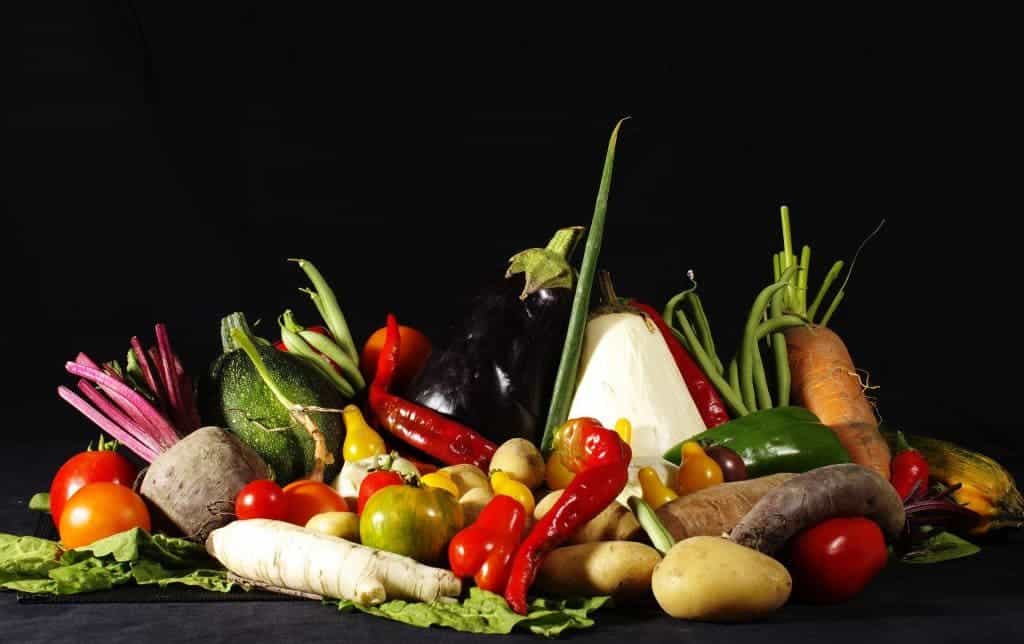“What should we eat?” is a question you’ll hear a lot from your significant other. While they may not be sure, a new paper is: about 2 servings of fruit and 3 servings of vegetables every day.

New research from the Harvard T. H. Chan School of Public Health, Boston, reports that getting five servings of fruits and vegetables every day (particularly getting 2 of fruit and 3 of vegetables) is the optimal amount for all your health needs. This ratio was found to help reduce the risks of developing numerous chronic health conditions, including cardiovascular disease and cancer.
However, only 1 in 10 adults in the U.S. eat enough fruits and vegs, the study adds, citing statistics from the U.S. Centers for Disease Control and Prevention.
Pear-shaped snacks
“While groups like the American Heart Association recommend four to five servings each of fruits and vegetables daily, consumers likely get inconsistent messages about what defines optimal daily intake of fruits and vegetables such as the recommended amount, and which foods to include and avoid,” said lead study author Dong D. Wang, M.D., Sc.D., an epidemiologist, nutritionist and a member of the medical faculty at Harvard Medical School and Brigham and Women’s Hospital in Boston.
The paper looked at two studies — the Nurses’ Health Study and the Health Professionals Follow-Up Study — which together followed nearly 100,000 adults worldwide for up to 30 years. Both studies included detailed dietary information on its participants, which were collected every two to four years. The team also included data on fruit and vegetable intake alongside mortality rates from a further 26 studies that included about 1.9 million participants in 29 countries and territories in North and South America, Europe, Asia, Africa, and Australia.
All in all, the analysis revealed that:
- About 5 servings of fruits and vegetables daily was associated with the lowest risk of death among participants. Having more than five servings didn’t seem to confer any additional benefits.
- Having 2 servings of fruit and 3 of veggies daily seemed to yield the best results; these participants had a 13% lower risk of death from all causes, a 12% lower risk of death from cardiovascular disease, a 10% lower risk of death from cancer, and a 35% lower risk of death from respiratory disease, compared to participants who ate 2 servings of fruit or vegetables per day.
- Starchy foods (corn, potato, peas, fruit juices, so on) were not associated with this reduction in mortality. In other words, they don’t count towards your 5 daily servings.
- Leafy greens such as spinach, lettuce, or kale, alongside fruits and vegetables rich in beta carotenes and vitamin C (brightly-colored items such as carrots, bell peppers, berries, or citrus fruits) do count towards these 5 servings.
“Our analysis in the two cohorts of U.S. men and women yielded results similar to those from 26 cohorts around the world, which supports the biological plausibility of our findings and suggests these findings can be applied to broader populations,” Wang said.
The team hopes that their work will help make it a bit clearer to everybody on exactly what constitutes good dietary habits, and which items count towards the succinct public message of 5-a-day. This amount, says Wang, likely “offers the most benefit in terms of prevention of major chronic disease” and is relatively achievable on a day-to-day basis.
One particularly important finding here is that not all fruits and vegetables offer the same benefits — some even offer none. Of particular note here are starchy vegetables, fruit juices, and potatoes, which offer no benefits despite the fact that current dietary guidelines treat these items the same as other fruits or vegetables. Fruit juices contain a lot of sugar, for instance, while potatoes aren’t as good for you as other vegetables.
Still, the study so far is only observational, which means that it found an association between certain dietary factors and a lower risk of death. But as you all surely know by now, correlation does not imply causations — just because these two elements are associated doesn’t mean that one causes the other. More work is needed to establish a solid cause-and-effect relationship, but in the meantime, it can’t hurt to chow down on some fruits and vegs.
The paper “Fruit and Vegetable Intake and Mortality: Results From 2 Prospective Cohort Studies of US Men and Women and a Meta-Analysis of 26 Cohort Studies” has been published in the journal Circulation.






